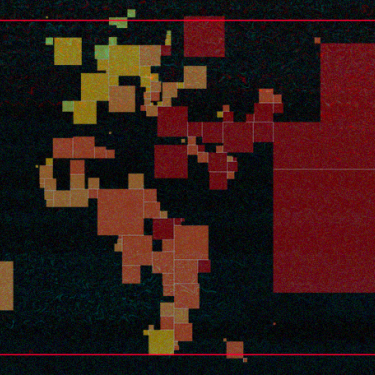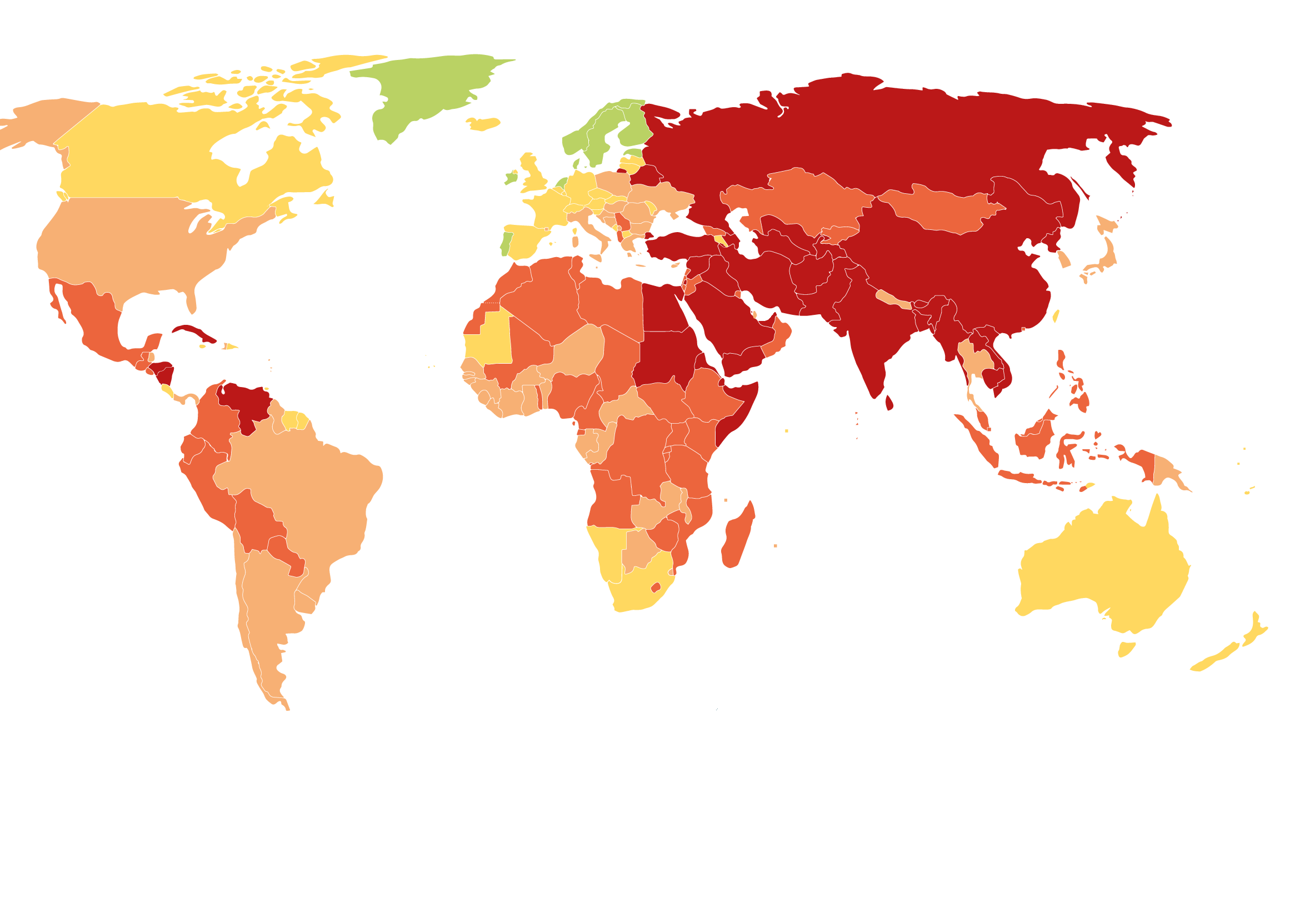More than half of world’s population live in countries coloured red on RSF’s press freedom map

More than 50% of the world’s population live in a country or territory where the situation is classified as “very serious” in the 2024 World Press Freedom Index compiled by Reporters Without Borders (RSF). Recent curbs or attempted curbs on news and information during elections in five of the most populous countries highlighted the degree to which media freedom is suppressed.
This is appalling. More than half of the world’s citizens live in extremely dangerous places for press freedom, places where working as a journalist means risking your life or your liberty, while fewer than 8% live in places where the situation is classified as “good” or “satisfactory."
According to the 2024 World Press Freedom Index map, this 50% of the world’s population live in 36 countries (it was 31 countries in 2023) that are among the most populous in the world. Five of the world’s ten most populous countries are coloured red on RSF’s new press freedom map. They are India (ranked 159th out of 180 countries in the Index), China (172nd), Pakistan (152nd), Bangladesh (165th) and Russia (162nd).
Aside from India, which is currently holding elections, all of these countries held elections in 2023 or the first few months of 2024 in which the press freedom violations just reinforced their ranking in the bottom sixth of the Index.
“The results of RSF's World Press Freedom Index, unveiled on 3 May 2024, World Press Freedom Day, are alarming about the state of the world. More than half of humanity live in a country where the press freedom situation is classified as “very serious.” This was flagrantly exposed by the serious obstacles to the right to news and information during elections held in the past year in the five global demographic giants coloured red on the 2024 World Press Freedom Index map. RSF calls on the 36 counties coloured red in the 2024 Index to remedy the situation by putting a stop to their obstructive practices.
Elections lend themselves to attempts at political control over news and information. The extent of this control is a particularly useful guide to the degree to which press freedom is curtailed. This was the case with the five demographic giants coloured red on the press freedom map, whose elections highlighted the gravity of the threats to the right to information. Violence against journalists, censorship and disinformation, in particular, have marred election campaigns in these countries since that start of 2023.
-
In China (172nd), President Xi Jinping was reelected for a third term in March 2023 in what is the world’s biggest jailer of journalists, with more than 110 currently detained. Xi is now trying to export his totalitarian model of news control.
-
In Russia (162nd), new laws for regulating the Russian Internet – “Runet” – ahead of the March 2024 election were designed to silence dissident voices and restrict access to reliable news and information for the more than 140 millions inhabitants.
-
In Bangladesh (165th), where Sheikh Hasina unsurprisingly won a fourth consecutive stint as prime minister in January 2024’s general elections, the preceding year saw a great deal of violence against journalists, especially during demonstrations that fuelled a climate of terror favourable to the government.
-
In Pakistan (152nd), media censorship by the intelligence agencies – which are suspected of being behind murders of journalists abroad – was stepped up during the February 2024 election campaign with the aim of keeping former Prime Minister Imran Khan’s party out of the media.
-
In India (159th), as a third term is sought by Narendra Modi – whose first ten years as prime minister since 2014 have already seen 28 journalists killed – the scourge of disinformation campaigns, harassment of journalists and restrictions on foreign reporters’ access to the country have all been growing.
Election year that threatens information
The probability of governments trying to manipulate news and information is high in 2024, an unprecedented election year with polling scheduled in 76 countries with a total of 4.1 billion inhabitants – more than half of the world’s population. Signs of a decline in the freedom to report and receive the news are already appearing in other populous country holding elections that are not coloured red on the map: in Mexico (121st) and Indonesia (111th), where that situation is “difficult,” and in Brazil (82nd) and the United States (55th), where the situation is “problematic.”

